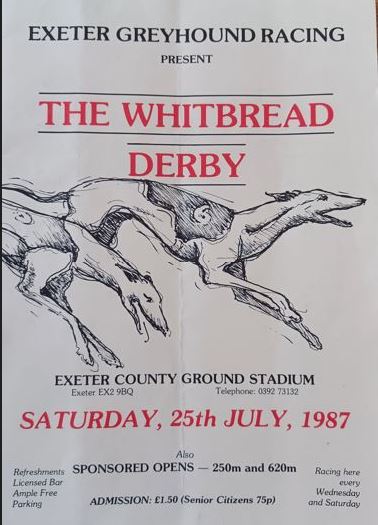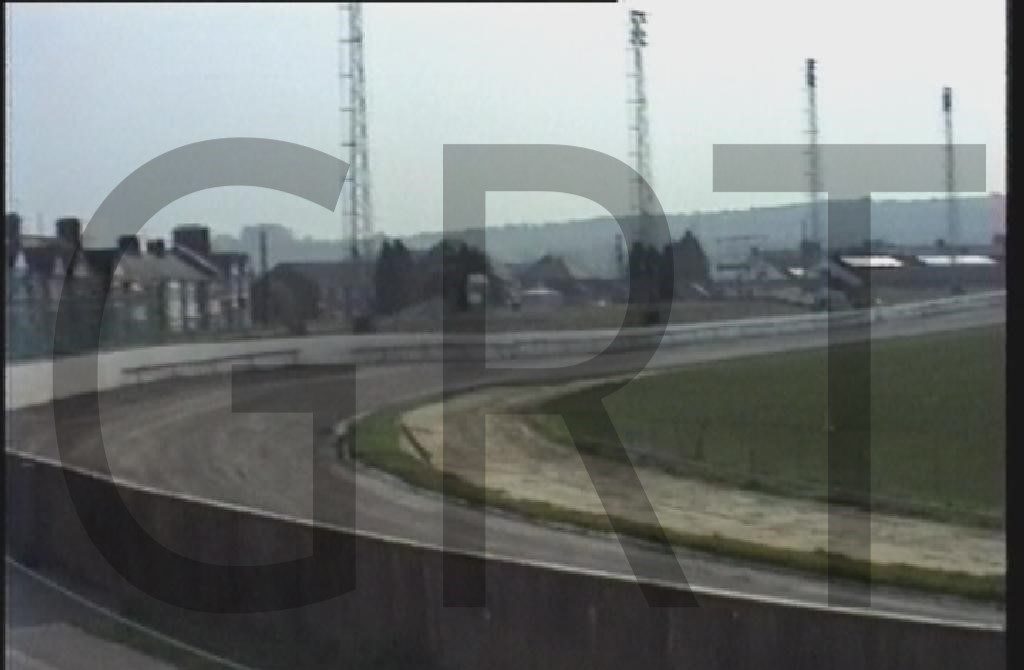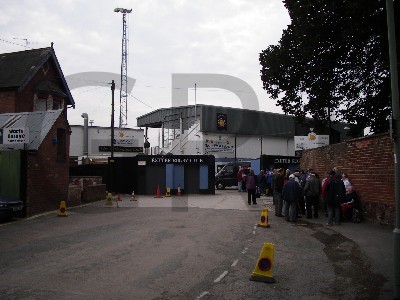County Ground Stadium, Church Road, St Thomas, Exeter, Devon.
POSTCODE———————————EX2 9BQ
LOCATED————————————At the end of Church Road in a District known as St Thomas, approximately one mile south east of Exeter city centre.
ORIGINAL SITE—————————–Farm grazing land that became used for Athletics before the rugby stadium developed.
DATE CONSTRUCTED——————–Early 1890’s.
DATE VENUE OPENED——————-1893 for Athletics.
Meaning other sports may have taken place prior to the arrival of Greyhound Racing.
FIRST MEETING—————————-December 13th 1930.
Greyhound Racing only.
LICENSED OR INDEPENDENT———-Independent
All venues covered would have to be licensed with the government, licensed suggested in this section would refer to tracks operating under NGRC Rules.
INSIDE OR OUTSIDE HARE TYPE——Inside hare then outside McKee.
Please note that the Electric Hare suggested is only a guidance and would have been in operation for a certain amount of time at this venue. Although it is not necessarily guaranteed that it was operational all the time, as other types of lure may have been used and updated as time progressed.
DISTANCES———————————–250, 440 and 620 metres.
Please note that most racing venues distances had become varied throughout the years, the ones given above were at once point set and offers only a guidance to the track size.
CIRCUMFERENCE—————————Not known
Please note that alterations at most racing venues throught its existence would see that the circumference of the track would vary, the one shown above offers only a guidance to the track size.
BIG RACE NAMES—————————Devon Derby,and Devon St Leger.
STADIUM SHARED WITH——————Rugby Union, Athletics and Speedway.
LAST MEETING——————————-November 1997.
Greyhound Racing only.
STADIUM CLOSURE DATE—————-Continued to host rugby union up to 2006.
Meaning other sports may have taken place after Greyhound Racing had ceased.
STADIUM DEMOLITION——————–2006
BUILT ON SITE——————————–Luxury homes on Cheiftan Way, Sandford Place and Cole Mews.
In some cases, structure’s that originally covered the venue after the stadium had been demolished, may have been themselves demolished too, so the one described is more likely to be the one which now presently covers the site.
EVIDENCE LEFT TODAY——————–Nothing known of.
FURTHER COMMENTS———————None

















Another one of Devon’s established greyhound tracks in recent times was the one at The County Ground Stadium in Exeter. The venue was found in the district of St Thomas, an area approximately one mile east of Exeter’s city centre. First signs of sporting activities on the site came during 1893 after a section of grazing land had been purchased to host athletic events and became known as The Devon County Athletics Ground. Slowly it developed in to a rugby ground, having later been purchased by the Exeter Rugby Club, who’s first match was against The New Zealand All Blacks Touring Side in 1905.
Other sports featured at the venue but only as tenants, such as cricket, cycling, tennis, horse shows, with Speedway being introduced in 1929. During 1930 Greyhound Racing had taken place at the nearby Oak Marsh venue, a temporary track that had been in operation just half a mile south of The County Ground but had ceased operations once the summer months were over, its demise possibly contributing to a new venue being sought.
It was after this period that The County Ground staged its first greyhound meeting albeit on a Saturday evening of the 13th of December 1930, with the meeting consisting of not only greyhounds but Whippet Racing too, with a dog called Hamlet winning the very first race. The County Ground began operations as an independent track, but by May 1932 the venue had competition, as a new track at Marsh Barton had opened just half a mile away. Speedway Racing ceased at the County Ground in 1931, but its return in 1947 had found itself a much more established attraction than before. Just to add more facts, Exeter along with Canterbury became the only Speedway tracks that would race around the outer perimeter of a greyhound track.
The declaration of The Second World War in September 1939 had seen Greyhound Racing across the UK put on hold, yet within days of this ban, the County Ground became the second track to get the green light to continue racing, after the Romford track had become the first. Meetings were restricted, albeit under daylight hours only, but the stadium played its part in the war effort with military and transporting vehicles being stored there, and later in the war had seen American serviceman training there as their preparations for D Day.
By the end of 1957 The County Ground was now the only greyhound track in Exeter, as its competitor The Marsh Barton Stadium had closed. In its latter days, The County Ground had promoted six dog racing, over distances of 250, 440, and 620 metres, with the hounds chasing an inside Sumner type hare. The venue also hosted big race attractions such as The Devon Derby run over 440 metres, with heats run in July and the final in early August, The Spring Cup run in May, and The St Leger run over 620 metres during early October.
But sadly, the early 1990’s had seen a serious decline in Greyhound Racing across most of the tracks across the UK, with the Exeter track feeling the pinch also, but a more worrying contributory lay ahead, as it was announced that the rugby club would be prepared to sell the stadium, with a view of moving to a more prosperous venue. Their reason stating that the stadiums crowd capacity had been vastly reduced to 5,200, this due to the stadium having become run down, and in need of a serious cash injection to keep up with stadium regulations. This uncertainty had snow balled amongst greyhound trainers and owners, as their unwillingness to buy new greyhounds was showing, mainly due to the reduced numbers of greyhound entrants on the card.
By late 1995 it was clear that this was the case as the promoter was unable to fill Thursday night meetings and was now surviving on just one Saturday night meeting per week. Greyhound Racing would continue well into 1996, with the racegoers witnessing “Black Silk” winning The Devon Greyhound Derby on the 3rd of August, but well unaware of what was to come three weeks later.
Unknown to them that on the 24th of August 1996, Exeter’s County Ground had seen its last greyhound meeting, with an announcement made in the following Fridays Exeter’s Express and Echo, that the tracks promoter Jim Newbold, had been unable to fill the following Saturday nights race card, due to not enough entries. Further explanation from Mr Newbold had expressed that this had been the case for a good number of weeks and that there was nothing more he could do other than to close the Exeter track.
Fortunately, efforts were made by other parties to continue Greyhound Racing at the County Ground, but it was a brief spell only with racing coming to a close by the end of 1997. But that uncertainty of the stadium closing may have been premature, as Rugby Union along with Speedway continued to stage events right up until 2005, although somewhere in between the stadium had been sold for redevelopment.
The sale of the stadium had brought forward the eviction of the Exeter Speedway team, even though they finished on a high, after one of its famous sons, the ex-World Champion New Zealand rider Ivan Mauger, completed four laps to close the final ceremony. Not surprisingly it was the Rugby Club that would bring down the curtain on sporting events at The County Ground, with its final match being played at the end of the 2005-06 season. 2006 saw the demolition of the stadium, with the site becoming abandoned for a good number of year’s following, before eventually Bellway Homes decided to build 150 luxury homes on it.
As for the Exeter rugby club their future is secure, as it now hosts its matches at a brand-new stadium on the outskirts of the city, its floodlights clearly visible from the M5, this move cementing that the Rugby club will never ever share its facilities with Greyhound Racing nor Speedway again.

Recent Comments